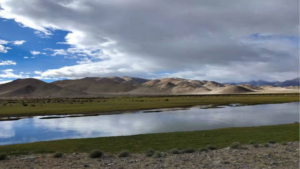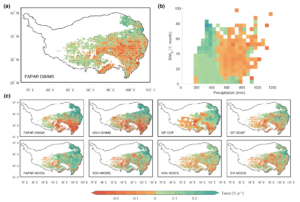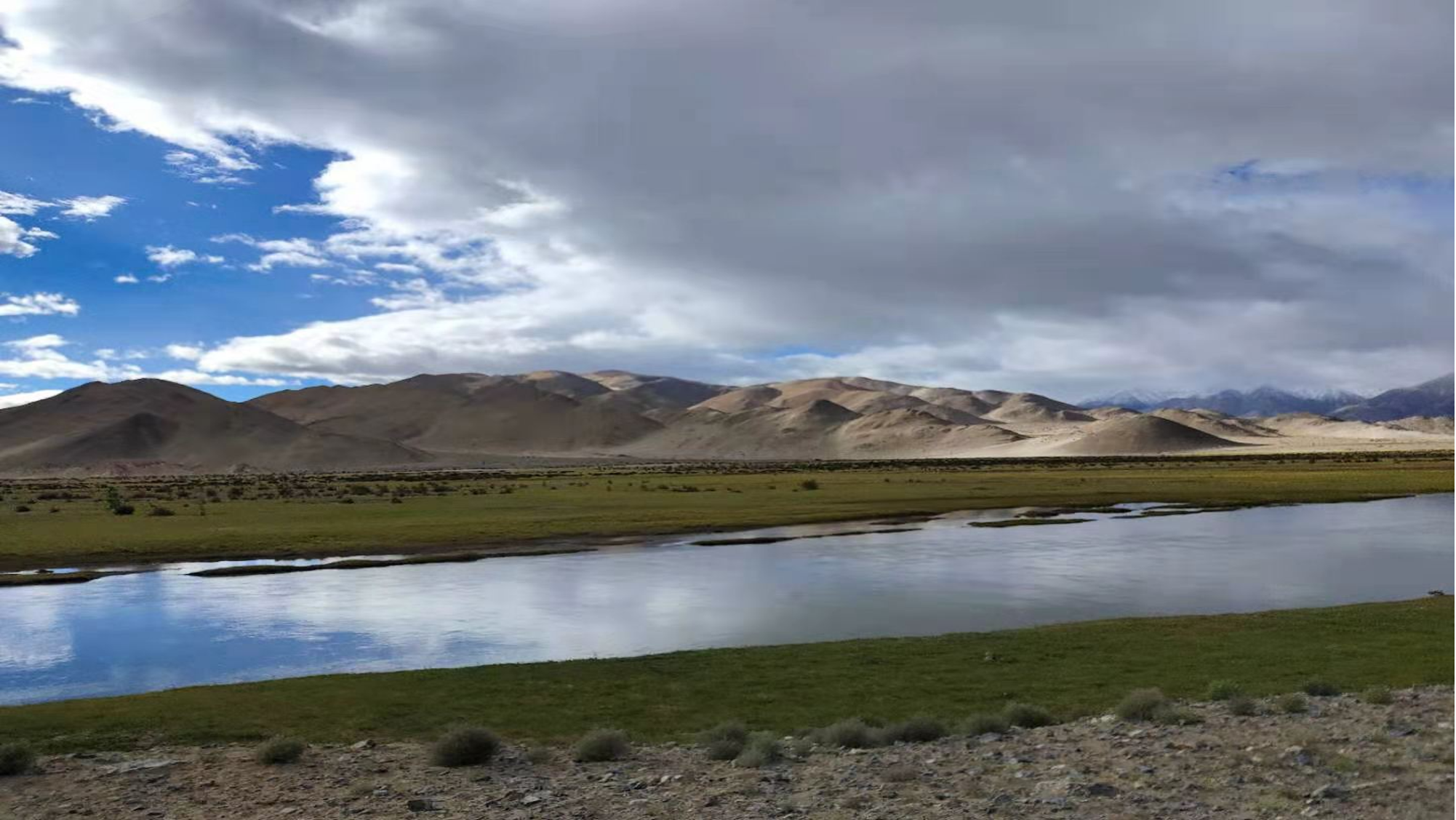
The Qinghai-Tibet Plateau ©Ziqi Zhu.
The Tibetan Plateau, also known as the Qinghai-Tibet Plateau, or ‘the roof of the world,’ is a vast plateau that lies between the Himalayan range to the south and the Taklamakan Desert to the north. It extends for 1,600 miles from east to west and 620 miles north to south, at an average elevation exceeding 14,800 ft and is surrounded by massive mountain ranges, including Mount Everest and K2. The plateau is diverse and supports multiple ecoregions and habitats such as montane grasslands, alpine shrublands, conifer forests, subalpine meadows, alpine tundra and glaciers. It is an area of high scientific interest, especially for climate change studies.
A new paper led by LEMONTREE’s Ziqi Zhu in Global Change Biology explores how eco-evolutionary optimality, EEO, can be used to explain differing responses in vegetation greenness to environmental changes in the Tibetan Plateau:
Optimality principles explaining divergent responses of alpine vegetation to environmental change.
Recent increases in vegetation cover, observed over much of the world, reflect increasing CO2 globally and warming in cold areas. However, the strength of the response to both CO2 and warming appears to be declining. In this study, we examine changes in vegetation cover on the Tibetan Plateau over the past 35 years (1982-2016).
Although the climate trends are similar across the Plateau, drier regions have become greener by 0.31±0.14% yr−1 while wetter regions have become browner by 0.12±0.08%yr–1. This divergent response is predicted by a universal model of primary production accounting for optimal carbon allocation to leaves, subject to constraint by water availability.

Figure 1. Divergent responses of alpine peak vegetation cover to environmental change ©Ziqi Zhu
Rising CO2 stimulates production in both greening and browning areas; increased precipitation enhances growth in dry regions, but growth is reduced in wetter regions because warming increases below-ground allocation costs. The declining sensitivity of vegetation to climate change reflects a shift from water to energy limitation.
This study demonstrates the potential of EEO approaches to reveal the mechanisms underlying recent trends in vegetation greenness and provides further insight into the response of alpine ecosystems to ongoing climate change.
You can download the full paper:
Zhu, Z., Wang, H., Harrison, S.P., Prentice, I.C., Qiao, S. and Tan, S. 2022. Optimality principles explaining divergent responses of alpine vegetation to environmental change. Global Change Biology, https://doi.org/10.1111/gcb.16459
 Ziqi Zhu is a PhD student based at LPICEA, Tsinghua University under the supervision of Dr Wang Han. He recently won an award at the Ecological Society of China conference for this presentation based on this paper: https://research.reading.ac.uk/lemontree/award-winning-optimality-talks-at-the-ecological-society-of-china-conference-2022/
Ziqi Zhu is a PhD student based at LPICEA, Tsinghua University under the supervision of Dr Wang Han. He recently won an award at the Ecological Society of China conference for this presentation based on this paper: https://research.reading.ac.uk/lemontree/award-winning-optimality-talks-at-the-ecological-society-of-china-conference-2022/

